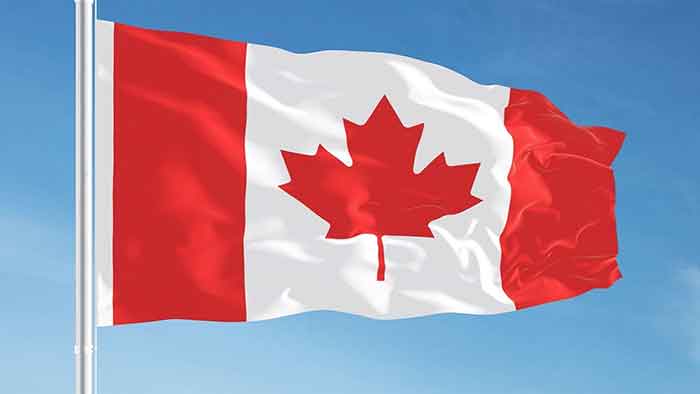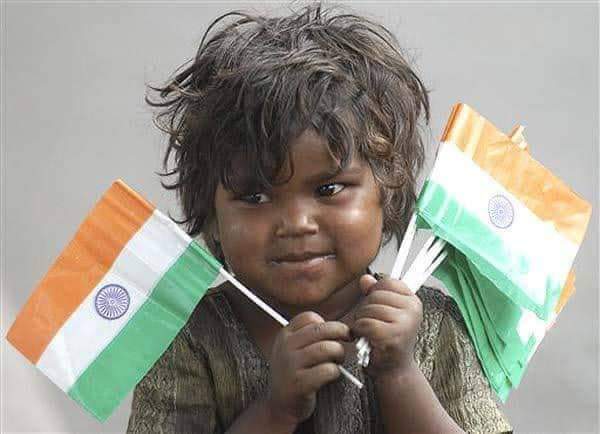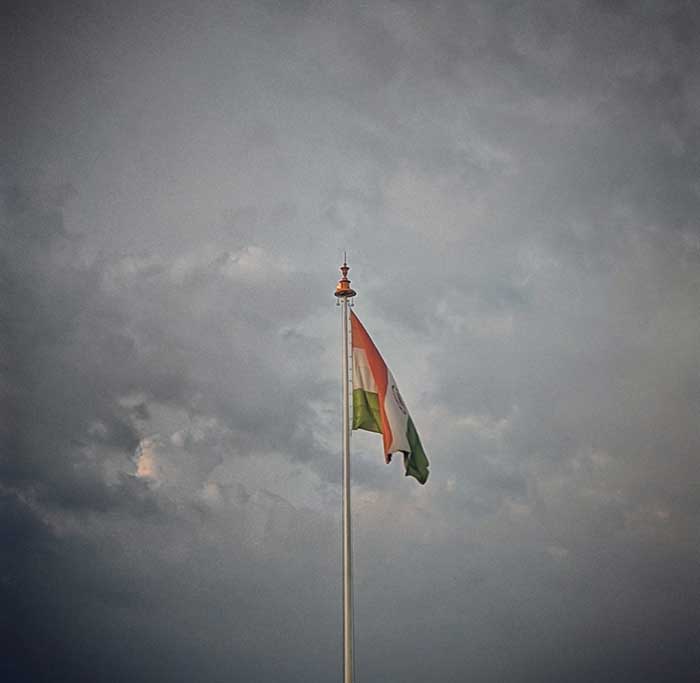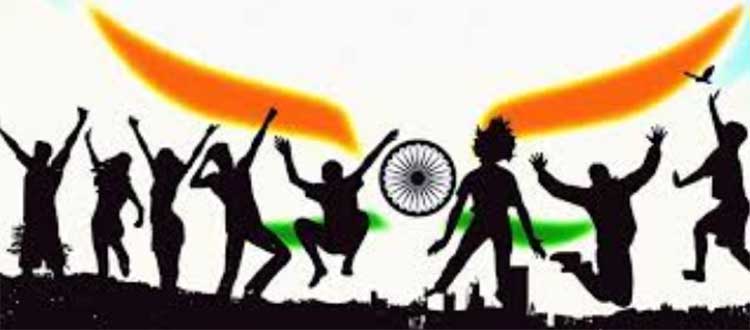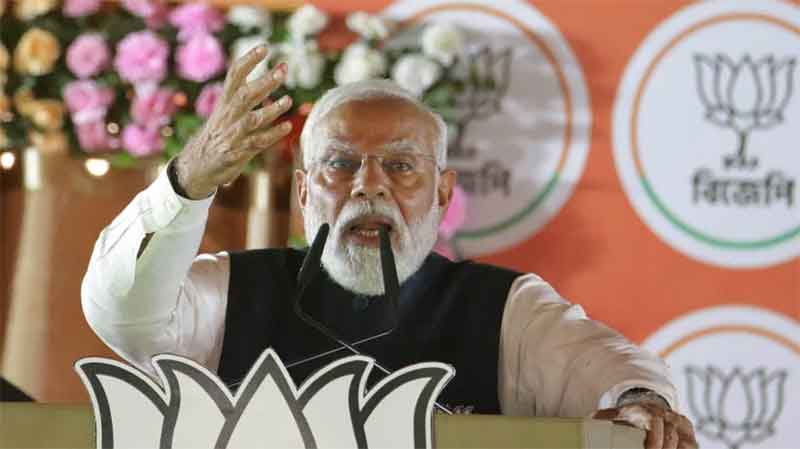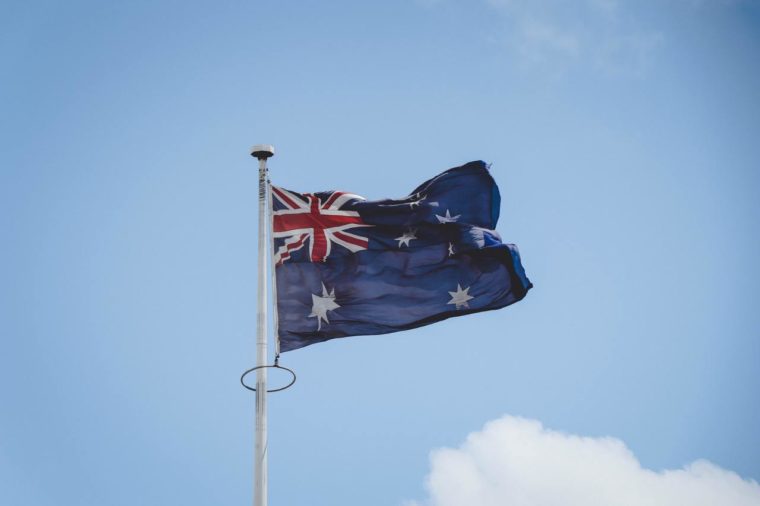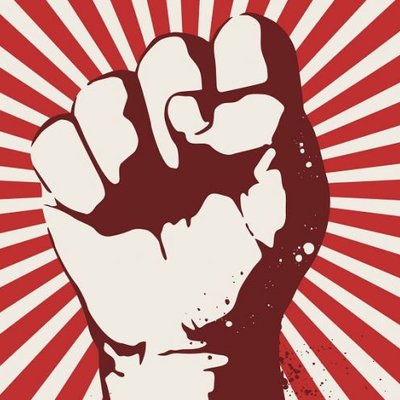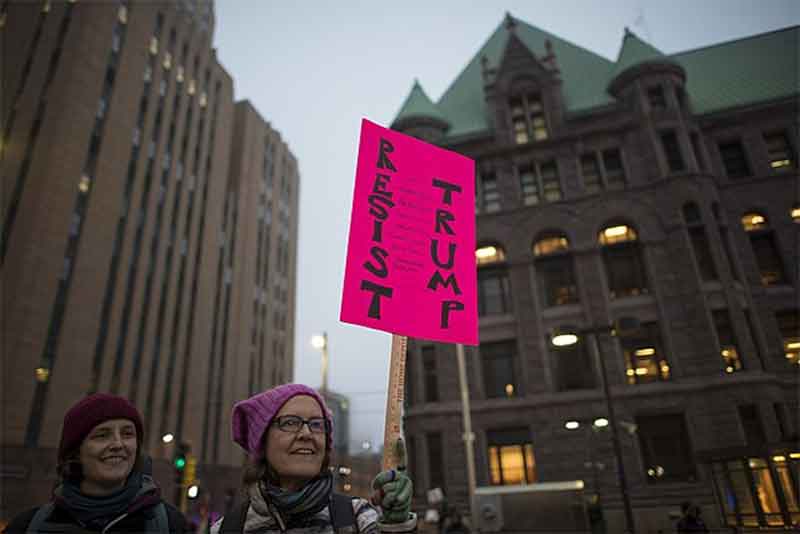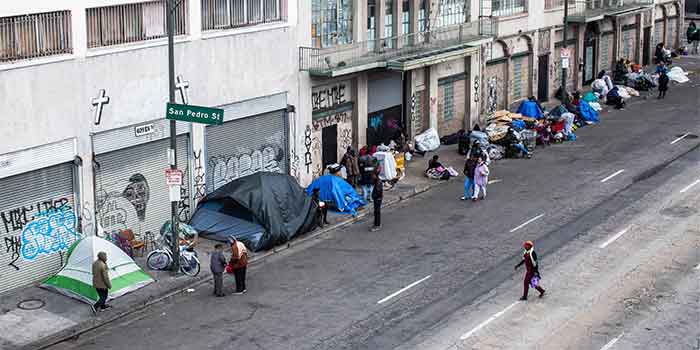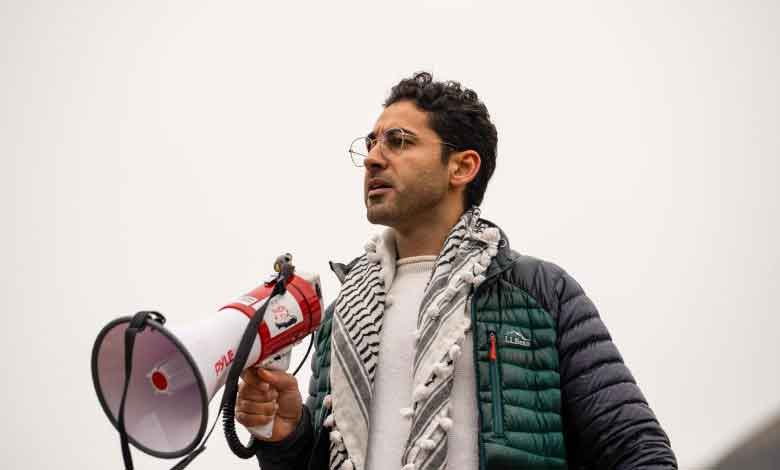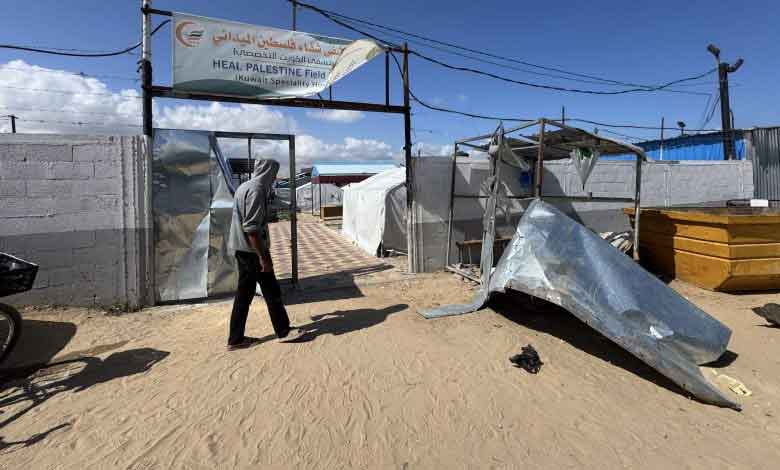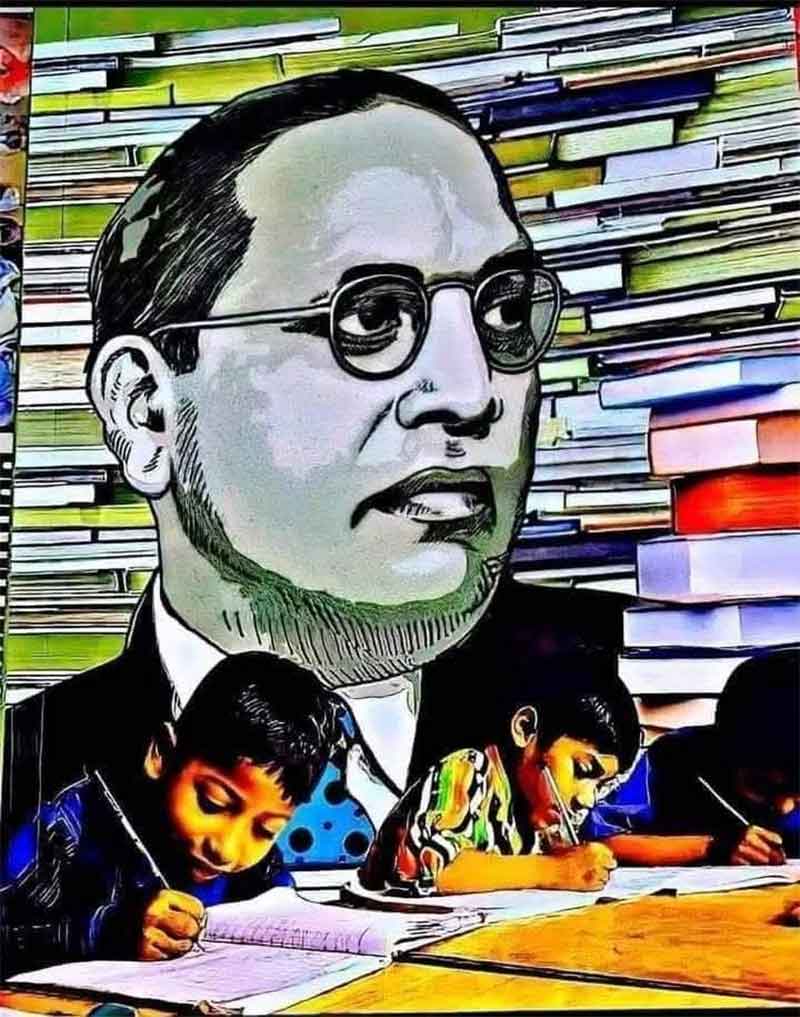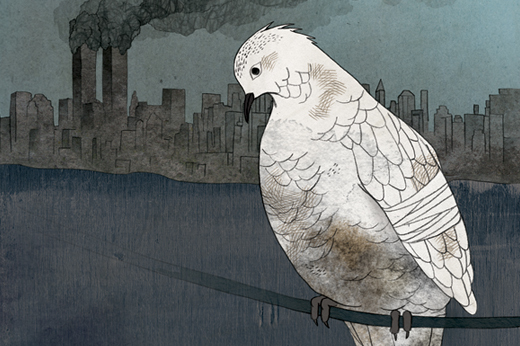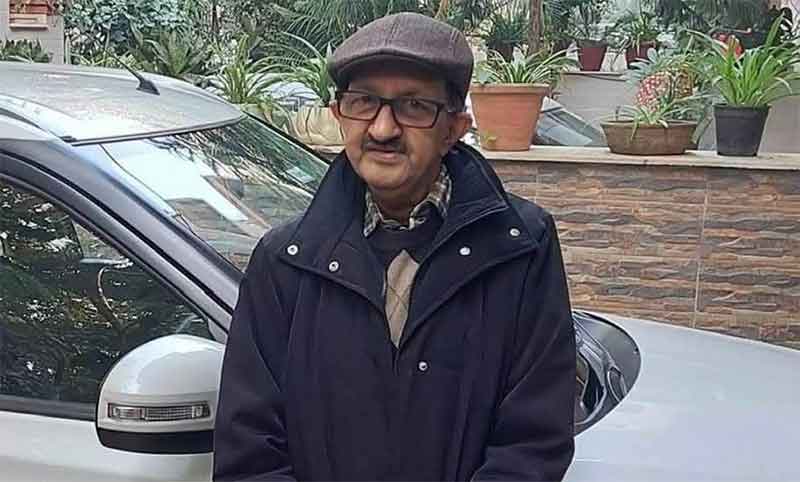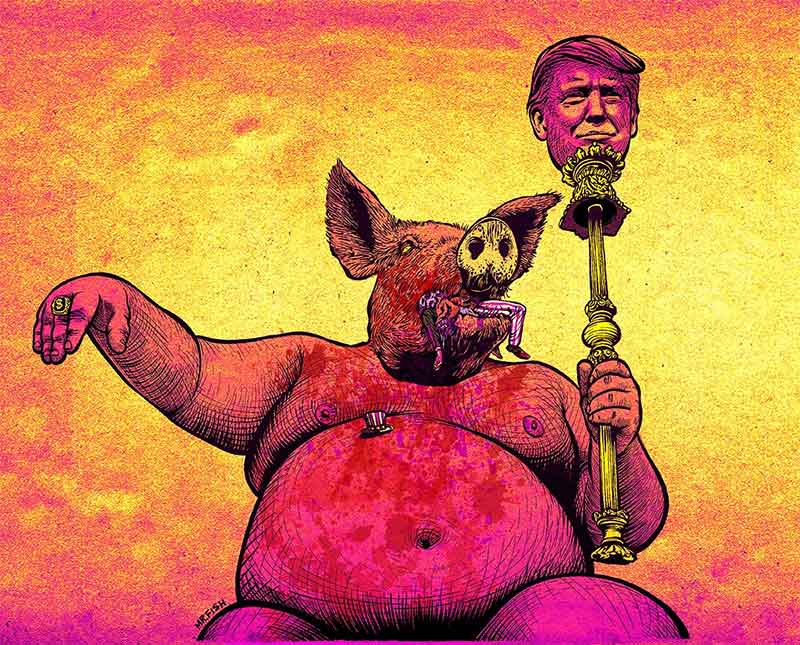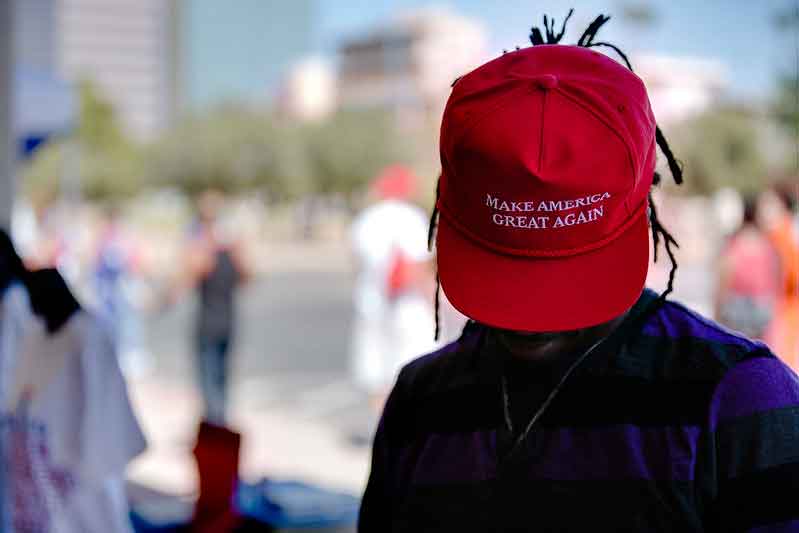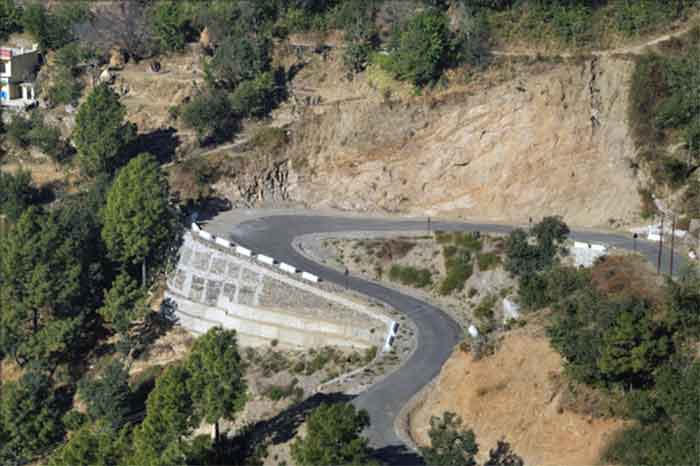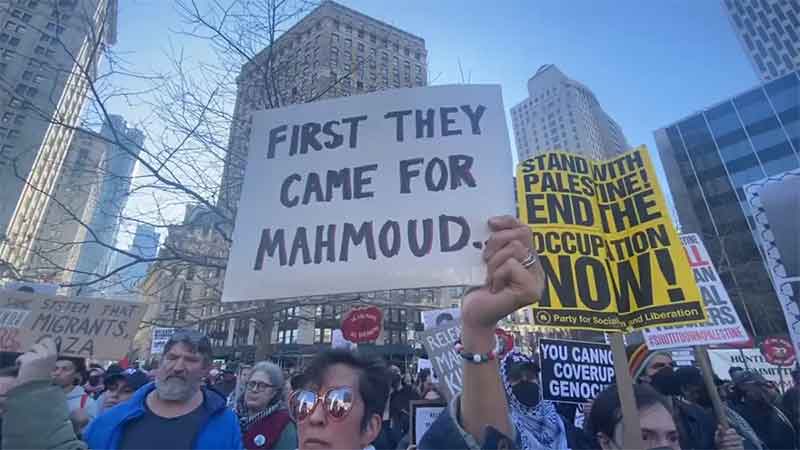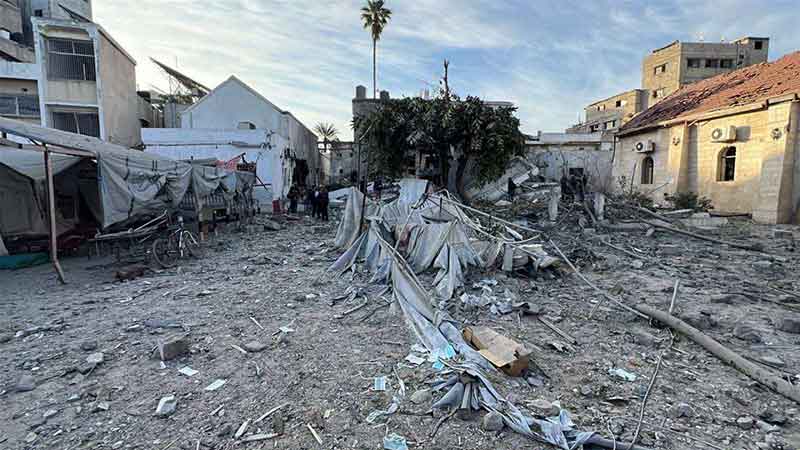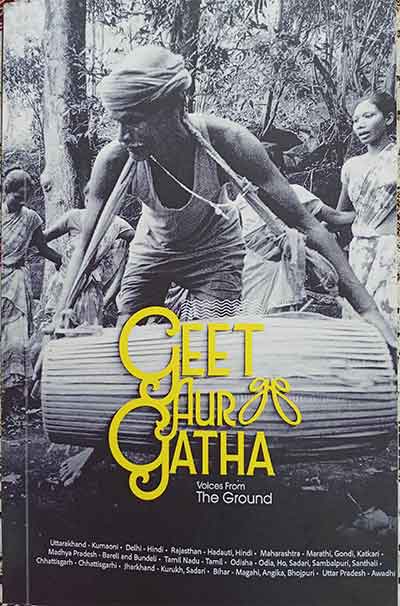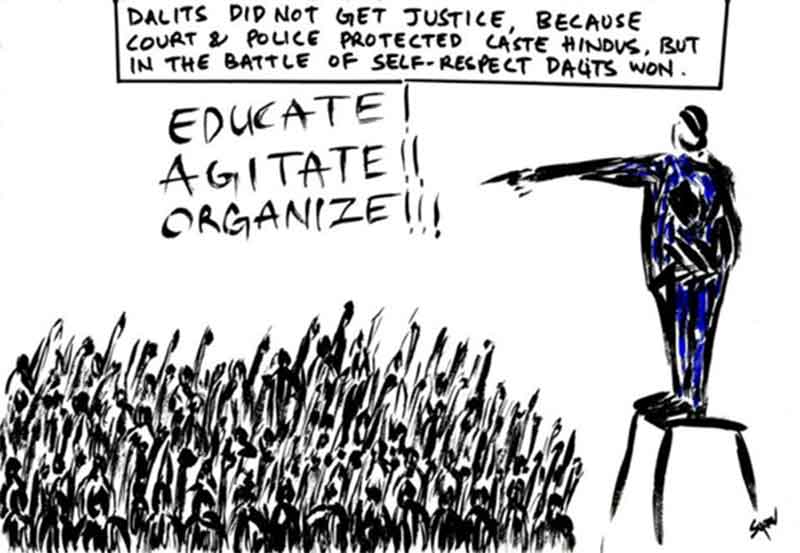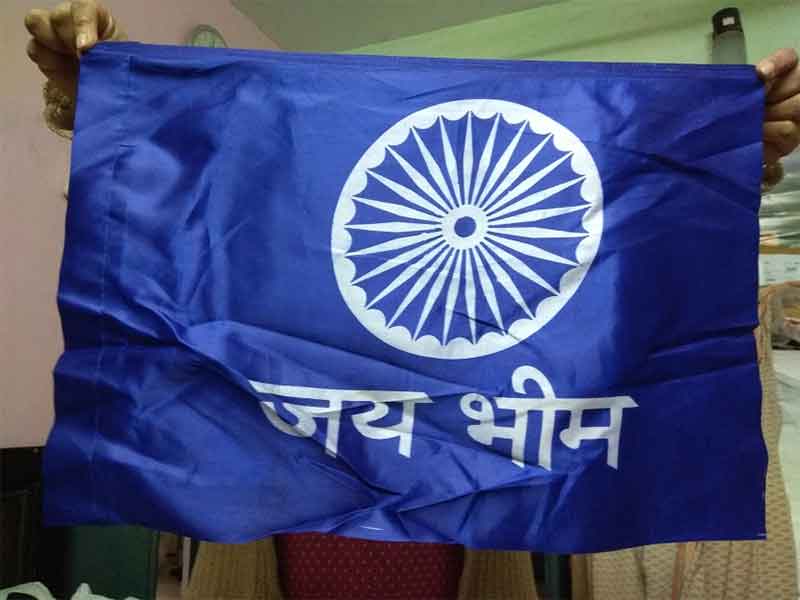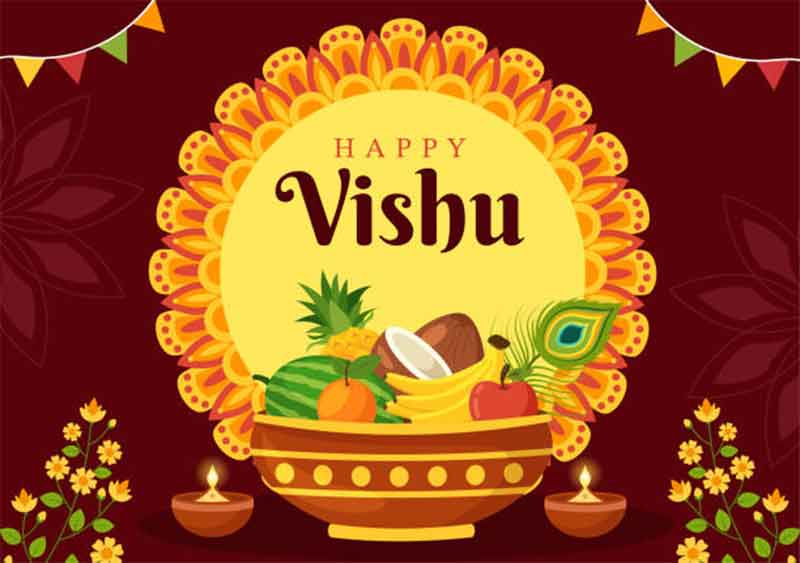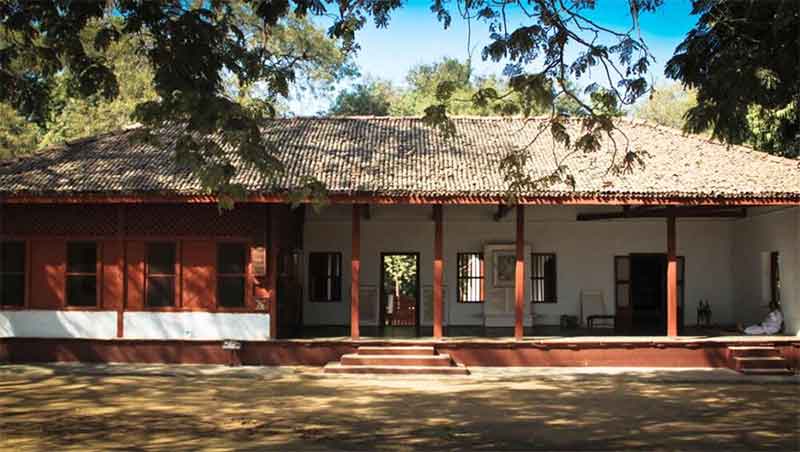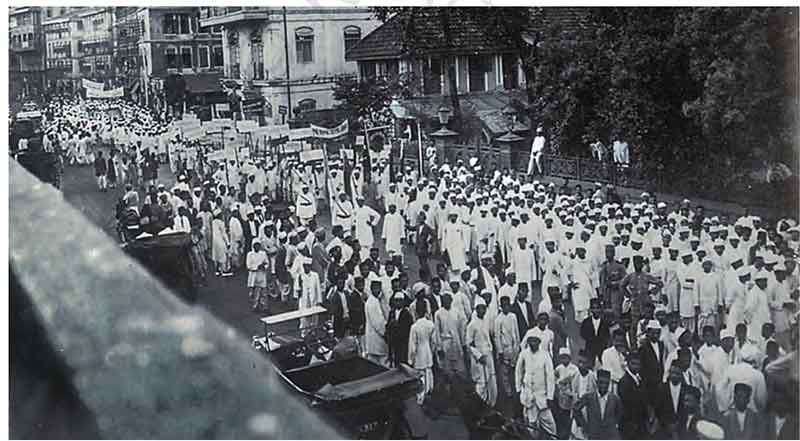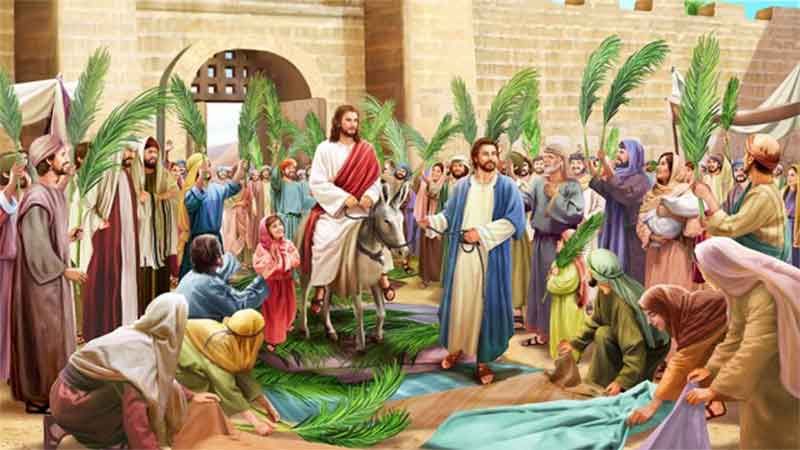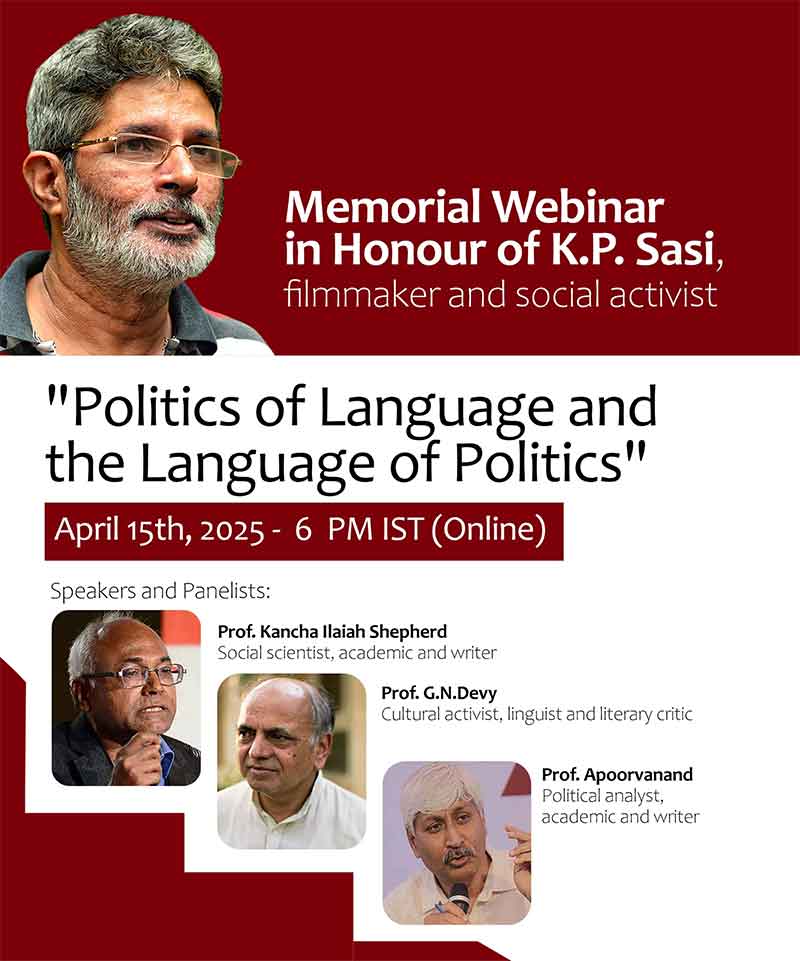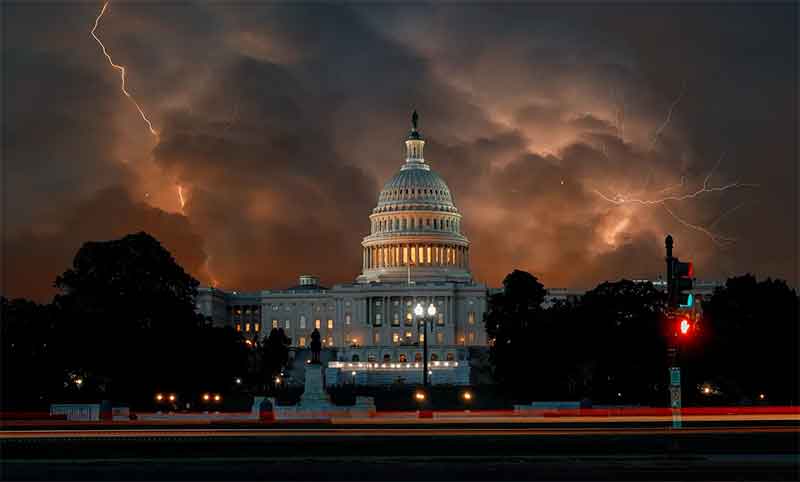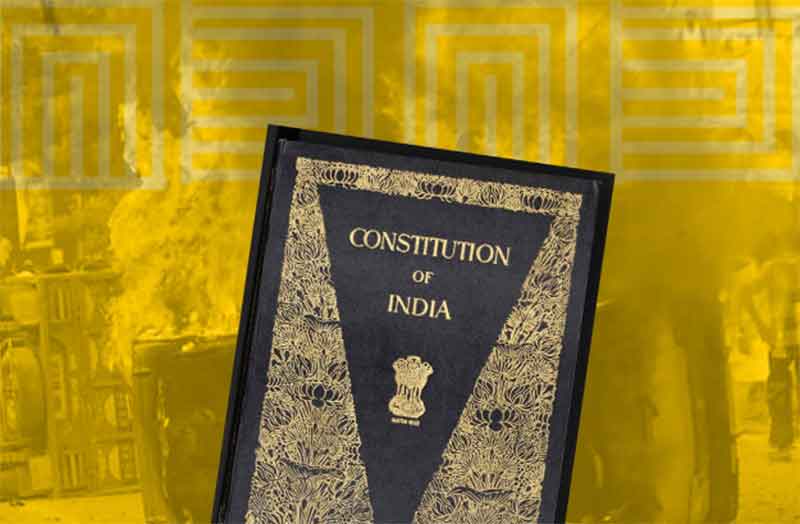
In recent years, much has been written and spoken about Hindu subjugation under Muslim and British rule for many centuries, as the cause of the disadvantages today’s India faces. The following attempts to put a perspective on the matter.
The word “rule” implies political rule, and “ruler” means king. The ruler, his territory and its people, are a political entity or state, because he exercises sovereignty through one or more means, especially physical or military force.
In the Indian subcontinent, from time immemorial, strong men arose from among the population, and exercised command and control of people in his vicinity. A ruler assured his people safety from other rulers, in exchange for people’s regular or periodic contribution through material tributes. Rulers amassed material wealth and power, not only from their own kingdom, but also by attacking other kingdoms and forcefully taking wealth in the form of precious metals and jewels, grain, cattle, women, etc. This added to their prestige, especially taking wives from the defeated ruler’s family.
These states grew or declined, or vanished and new states were created, as battles and wars were fought between rulers. Often, rulers changed due to palace intrigues of succession, with killings, resulting in a new ruler.
Indigenous kingdoms
The first invader into India was Alexander, in 326 BCE. Soon after, around 320 BCE, Chandragupta Maurya created a huge empire by defeating the Nanda dynasty. Chanakya was advisor to Chandragupta and his son Bindusara. Chanakya’s advice on statecraft, politics and the military – set out in his seminal work “Arthashastra” – had a key role in Bindusara’s son Ashoka (268 BCE –232 BCE) consolidating and expanding the empire over most of the subcontinent, except for the deep south and far northeast.
Among several of Chanakya’s dictums, an important political dictum advises a king to consider his neighbour as a potential enemy, and his neighbour’s neighbour as a potential ally. [Ref.1] The statecraft dictum advises the king that he must maintain a wealthy and stable state, by looking to his people’s welfare while creating wealth. The military dictum advises the king to maintain a strong army, to enable increasing his wealth and power by warfare with other kings, using four upayas or tools, namely, sama (conciliation), dama (gifts, inducements), danda (coercion, force) and bheda (creating dissension). [Ref.2]
Chanakya’s dicta were so practical for his times (“realpolitik” in modern terms), when battles and wars were fought between and among kings – sometimes even geneological relatives – and wealth and territory changed hands. However, because of, or in spite of, Chanakya’s teachings, the Maurya dynastic empire morphed into several smaller kingdoms.
Up to the 10th Century CE, rulers – Hindu, Buddhist and even Jains by faith – all over the subcontinent, fought among themselves. Knowingly or unknowingly adopting Chanakya’s realpolitik, indigenous rulers remained divided among themselves. They fought battles and wars among and between themselves, for various reasons, including old enmities, ongoing fueds, and lust for wealth and power. Thus, wealth and power, and political boundaries of these rulers kept changing with each victory/defeat. Mutual enmities or antagonism persisted over generations. As for internal administration, they forcefully, sometimes cruelly, extracted taxes from their subjects to support their fighting forces, and to maintain their rule and power. Knowingly or unknowingly they freely used the danda (coercion, force) aspect of statecraft, especially against the slightest opposition/dissent or challenge to their unquestionable authority. Exceptions were rare. This was the situation in the subcontinent from Mauryan days (BCE) right up until the 9th Century CE.
Muslim raiders, rulers, dynasts
The first notable raider was Muhamad Ghazni, who made 17 raids between 1000 and 1027 CE. He raided as far East as Kanauj, but repeatedly in Punjab and Gujarat, pillaging cities and temples, notably the wealthy, sacred Somnath temple. Ghazni was resisted bravely by Hindu rulers, but he defeated them every time he raided, and successfully looted gold, jewels, women, cattle, etc. from their kingdoms, because they fought individually, not unitedly. They had learned little if anything, from defeats even after suffering losses from multiple raids.
Also, the indigenous Rajput rulers failed to increase their fighting forces by arming and training the non-Kshatriya castes, because of strict adherence to the prescribed caste system. This was in spite of Chanakya’s realpolitik, that a Kshatriya king may increase his military power when necessary, by enrolling non-Kshatriya caste men in his fighting forces.
Ghazni was a raider, pillaging and returning. News of his 17 successes, the attraction of India’s incredible wealth, and of the divided and weak condition of indigenous rulers, encouraged other subsequent raiders, beginning with Muhamad Ghori.
Muslim invaders succeeded because indigenous rulers not only remained divided, but some clandestinely or even openly took the help of the Muslim raider or ruler, to defeat his Hindu rival, in order to settle old scores – insults, feuds, etc.
Muhamad Ghori was the first Muslim invader who stayed back to rule. He defeated brave Rajput kings in epic battles and established his rule in 1193. He was the first of successive Muslim rulers in India.
The longest-lived and last of Muslim dynasties was the Mughals. Starting 1526, the Mughal empire grew to its largest extent during Aurangzeb’s rule. However, even at the peak of its power, the Mughal empire did not cover the entire subcontinent, and a number of smaller Muslim and Hindu kingdoms survived.
In all these centuries, the Muslim rulers fought among themselves for wealth and power, and another and yet another Muslim invader overthrew a ruling dynasty, and established his own dynasty, secretly or sometimes openly taking military help or support from other Muslim rulers or Hindu rulers and/or financiers. In every dynasty, power – and the wealth that came with it – was fundamental for rulers, aspirants and contenders. Blinding, imprisonment, poisoning, torture, painful killing, were used even on the slightest whispered suspicion of opposition. (For example, Mughal Emperor Jehangir’s son Shah Jahan, executed his brothers and enthroned himself, and he was (later) imprisoned by his son Aurangzeb, who also executed his brothers). The subject peoples of the kingdom were merely sources of revenue, by imposition and extraction of taxes. At every level, cruelty or extreme cruelty was “normal”.
Successive Muslim rulers and successive Hindu rulers, all waited for the right time, opportunity and resources, to fight among themselves for adding to their own wealth and power. There were marriages of strategic convenience among ruling families, and also internal fights of succession within Muslim and Hindu dynasties. Thus, political boundaries between and among the Muslim rulers and Hindu rulers kept changing. Religion was hardly an issue in these power struggles – what mattered was rulers’ egos, and their personal wealth and glory.
Vijayanagar
The Vijayanagar Empire was established in 1336 by Harihara and Bukkaraya, primarily to ward off Muslim invaders. Devaraya II ruled from 1424 to 1446. He was a very successful ruler, who – as reported by Firishta, court historian to the Deccan sultans – augmented his armies with Muslim archers and cavalry, and expanded his empire. In the later years of the empire, Vijayanagar rulers even had Muslim and European mercenary forces in their army.
At its peak under Krishnadevaraya (1471–1529), Vijayanagar was the largest empire in India, after the fall of the Muslim Delhi Sultanate. Krishnadevaraya subjugated almost all of Southern India’s ruling dynasties and pushed back the Muslim Deccan sultanates. He ruled over almost the whole of southern India, and parts of Maharashtra and Odisha. The Hindu Vijayanagar empire was world-famed for its power, wealth, art and culture. Its power declined greatly after a major military defeat in the 1565 Battle of Talikota, by the combined armies of four Deccan sultanates. Vijayanagar finally collapsed in 1614, though its remnants remained until 1646.
India’s wealth attracts European traders
Even with the changing political situation due to warfare, India possessed enormous wealth, divided among the Hindu and Muslim kingdoms. This fabled wealth attracted the armed seafaring nations from Europe, who first came to trade, starting 1498 with the Portuguese, and followed by the English, Dutch, Danes and French. These European traders later found opportunity to increase their wealth by joining the power struggles within India, with the ascendancy of the Mughals at Delhi. They gradually increased their territorial and economic holdings, even while the Mughal empire came increasingly under Maratha attack.
The Mughal empire declined following Aurangzeb’s death in 1707, and by 1737, much of the former Mughal territories south of Delhi came under Maratha control, when Peshwa Baji Rao defeated the Mughal forces on the outskirts of Delhi.
Maratha Empire and the East India Company
But even during Aurangzeb’s rule, the brilliant Maratha leader Shivaji Shahaji Bhonsle (1630-1680), famous for his military and political prowess, repeatedly defeated Aurangzeb. Shivaji created the Maratha kingdom and kept challenging Aurangzeb. In 1653, Shivaji captured the Raigad fort – later his capital – from the Hindu Moré dynasty, not from a Muslim ruler. This again demonstrates that power struggles were not determined by religion.
The Maratha Confederacy under Chhatrapati Shivaji Maharaj, and later under Peshwa rulers, at times had Muslim forces fighting alongside them, against the Muslim dynasties at Delhi.
After Shivaji’s death, there were succession issues, and later the Peshwas ruled the Maratha Confederacy from Punjab to Thanjavur. But even at its peak, the Maratha Empire did not cover the whole subcontinent – there were Hindu and Muslim kingdoms outside the Maratha Confederacy’s political boundaries.
The decline of the Maratha empire began after its defeat at Panipat in 1761, by the combined armies of Afghan king Ahmad Shah Durrani, Rohilla Afghans and the Nawab of Awadh. [Ref.3]
In the meanwhile, after defeating the Muslim ruler of Bengal in the 1757 Battle of Plassey, the East India Company gained control over Bengal and the Gangetic Plain, and increased its wealth and influence manifold. They confronted the Marathas in three wars 1775-82, 1803-05, and 1817-18, along with signing treaties with the Marathas. The Marathas won the first, but lost the later two wars.
The Maratha Peshwa ruler failed to reinforce his infantry with the “low caste” men from within his empire. The English took advantage of this, and armed and trained a regiment of Mahar troops. This Mahar regiment was instrumental in the decisive English victory in the 1818 Bhima Koregaon battle. With its 1818 victory, the East India Company gained control over the whole of India.
Political boundaries over centuries
The rule of Chakravarti Ashoka Samrat’s Hindu (later Buddhist) Empire, the Muslim Mughal Empire, the Hindu Vijayanagar Empire, and the Hindu Maratha Empire, spanned across twenty centuries. They were the largest empires of their time, but their political boundaries did not cover the whole of India. Also, these large empires were not instruments of unification with other small and large kingdoms.
Over the centuries, caste or religion was no consideration for Muslim or Hindu rulers to use their military forces and take sides openly or secretly among themselves, to expand, protect or retain their own wealth and power. Thus, political boundaries within the subcontinent kept changing.
Caste practice was probably the biggest contributor to disunity, next only to greed and envy among Hindu and Muslim rulers, that kept India politically divided until 1947.
Rewind to 1639 – British rule
In 1639, the East India Company started with a territorial foothold at Madras (now Chennai) gained by the Raja of Chandragiri issuing a “firmaan”, granting it land and unimaginably beneficial trading and coinage-minting rights. [Ref.4] The trading post was converted into a fortified property (Fort St.George), housing English soldiers.
Over the following decades, the East India Company skilfully used a remarkably effective combination of chicanery, guile, cheating, assassination, violating treaties, bribing Hindu and Muslim rulers, and military force, to eliminate other European forces, and subordinate the Muslim-ruled and Hindu-ruled states, and gain control over the subcontinent.
The East India Company was an armed trading business corporation, not a political entity. When the British Crown took possession of the territorial properties of the East India Company in 1858, India became a political entity as a British crown colony, with a subcontinental boundary. The Hindu and Muslim states were enclaves within it. The British allowed Muslim and Hindu rulers to remain nominally sovereign with internal autonomy, as “princely states” under British suzerainty. A princely ruler was debarred from attacking a neighbour, and was denied the option to oppose the British. This ensured stable political borders within the British Indian colony. The Muslim and Hindu (and Sikh) rulers were permitted to maintain their traditional feudal titles, such as Nawab, Sultan, Maharaja, Raja, but were compelled to share their revenues with the British crown.
Most of these feudal rulers governed both oppressively and repressively, often cruelly. They forcefully extracted levies and taxes from their own people, not only to pay the British, but also to support their own extravagant life styles. Maharaja Nalwadi Krishnaraja Wodeyar, ruling the Kingdom of Mysore, was a notable exception.
Independence and political unification
The freedom movement of the Indian National Congress, was motivated by the idea of swarajya (self-rule) and political nationhood, first articulated in 1920. It included politically integrating the princely states as part of a unified nation. [Ref.5] The leaders of India’s freedom movement provided the political purpose of unification.
In 1947, there were 565 princely states officially recognized in the Indian subcontinent, apart from thousands of zamindaris and jagirs. [Ref.6] These covered 40% of the area of pre-independence India and constituted 23% of its population.
Of 565 princely states, 13 decided to join Pakistan. Of the 552 princely states within the boundaries of partitioned India, only four (Hyderabad, Awadh, Junagadh, Bhopal) had Muslim rulers, and 548 were governed by Hindu rulers.
The states signed Instruments of Accession to the newly independent Indian state, with the herculean efforts of Vallabhbhai Patel and V.P.Menon.
The way forward
Tracking subcontinental India’s political history from Mauryan times, shows that India was politically divided between Hindu and Muslim rulers for centuries, until the British crown ruled over both, starting 1858. Even under the British crown, Muslim and Hindu rulers always had wealth and power over their subjects, right up to 1947.
Therefore, to hold that India was ruled by Muslims and British for ten centuries since 1000, is a partial truth, and is misleading. It neglects the fact that throughout that period – and earlier, too – Hindu rulers were also actively powerful, right up to 1947.
The political freedom from British colonial rule won in 1947, was followed by political unification and integration of all the Peoples of India by the Constitution of India, in 1950.
Today, we must do everything possible to preserve the unity and integrity of the Republic of India, and protect the basic structure of the Constitution of India. In particular, every Indian needs to develop and practice the constitutional value of Fraternity with other Indians across religious, caste, gender, ethnic/language, socioeconomic and political diversities. We must object to and abjure all divisive policies, words and actions by any person, majority or minority. Ignorance, lies, fear and hate, are the greatest threats to our hard-won national unity and integrity.
References hyperlinked in the text
1. Rhitwique Dutta, Kaushik Dutta, Hemeswari Bhuyan ; “Kautilya’s Arthashastra and Indian Military Reforms”; <https://www.researchgate.net/profile/Hemeswari-Bhuyan/publication/372677827_Kautilya%27s_Arthashastra_and_Indian_Military_Reforms/links/64c288b70fae1319bfbc280a/Kautilyas-Arthashastra-and-Indian-Military-Reforms.pdf?origin=scientificContributions>; Research Gate; ISSN: 0048-2706 (Print), ISSN: 2227-9199 (Online); January 2023.
2. Col Harjeet Singh; “The Kautilya Arthaśāstra: A Military Perspective”; <https://www.claws.in/static/MP38_The-Kautilya-Arthasastra-A-Military-Perspective.pdf>; Maneckshaw paper, No.38 (2013); Centre for Land Warfare Studies, RPSO Complex, Parade Road, Delhi Cantt, New Delhi 110010.
3. “Third Battle of Panipat (1761)”; <https://panipat.gov.in/third-battle/>; Accessed 24.2.2025.
4, Dr. S. Krishnaswami Ayyangar, “The Character and Significance of the Foundation of Madras”; Madras Tercentenary Commemoration Volume, pp.43-47; <https://archive.org/details/TheMadrasTercentenaryCommemorationVolume>; Pub: Oxford University Press, August 4, 1939.
5. Sisson, Richard; Wolpert, Stanley (2018). Congress and Indian Nationalism: The Pre-Independence Phase; <https://books.google.co.in/books?id=47jADwAAQBAJ&pg=PA381&redir_esc=y#v=onepage&q&f=false>; University of California Press. p.381. ISBN. Retrieved 14 August 2023.
6. Bhargava, R. P. (1991). The Chamber of Princes. <https://books.google.co.in/books?id=BAQgNE1uSEgC&pg=PA313&redir_esc=y#v=onepage&q&f=false>; Northern Book Centre. pp.312–323.
S.G.Vombatkere is an Indian Army veteran settled in Mysuru, Karnataka. His areas of interest are developmental and strategic affairs. He has over 900 published articles in these areas, and over 80 published papers in niche areas of interest. Views expressed are personal. He can be contacted at [email protected]

